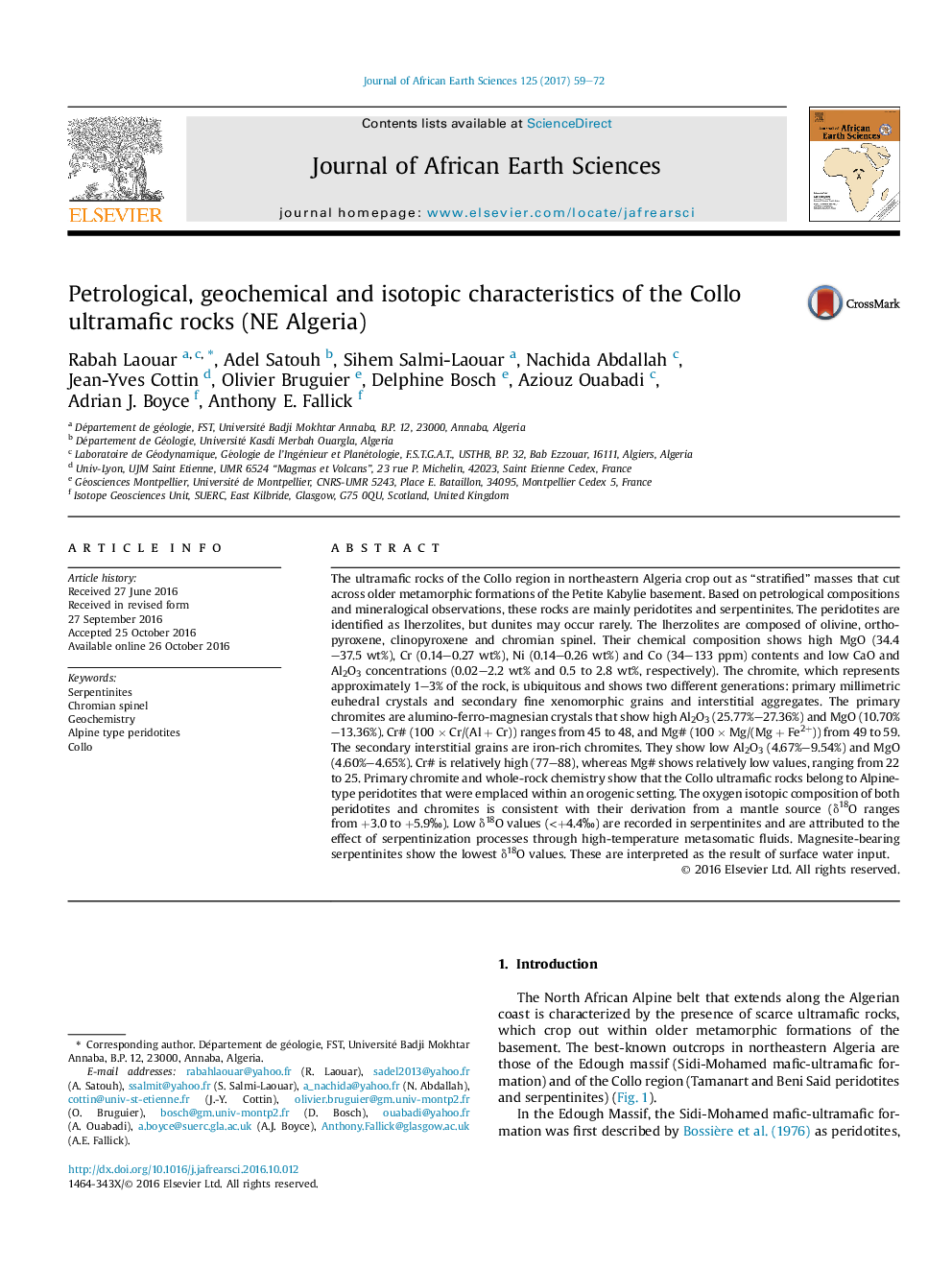| کد مقاله | کد نشریه | سال انتشار | مقاله انگلیسی | نسخه تمام متن |
|---|---|---|---|---|
| 4728120 | 1640183 | 2017 | 14 صفحه PDF | دانلود رایگان |
عنوان انگلیسی مقاله ISI
Petrological, geochemical and isotopic characteristics of the Collo ultramafic rocks (NE Algeria)
دانلود مقاله + سفارش ترجمه
دانلود مقاله ISI انگلیسی
رایگان برای ایرانیان
موضوعات مرتبط
مهندسی و علوم پایه
علوم زمین و سیارات
زمین شناسی
پیش نمایش صفحه اول مقاله

چکیده انگلیسی
The ultramafic rocks of the Collo region in northeastern Algeria crop out as “stratified” masses that cut across older metamorphic formations of the Petite Kabylie basement. Based on petrological compositions and mineralogical observations, these rocks are mainly peridotites and serpentinites. The peridotites are identified as lherzolites, but dunites may occur rarely. The lherzolites are composed of olivine, orthopyroxene, clinopyroxene and chromian spinel. Their chemical composition shows high MgO (34.4-37.5 wt%), Cr (0.14-0.27 wt%), Ni (0.14-0.26 wt%) and Co (34-133 ppm) contents and low CaO and Al2O3 concentrations (0.02-2.2 wt% and 0.5 to 2.8 wt%, respectively). The chromite, which represents approximately 1-3% of the rock, is ubiquitous and shows two different generations: primary millimetric euhedral crystals and secondary fine xenomorphic grains and interstitial aggregates. The primary chromites are alumino-ferro-magnesian crystals that show high Al2O3 (25.77%-27.36%) and MgO (10.70%-13.36%). Cr# (100 Ã Cr/(Al + Cr)) ranges from 45 to 48, and Mg# (100 Ã Mg/(Mg + Fe2+)) from 49 to 59. The secondary interstitial grains are iron-rich chromites. They show low Al2O3 (4.67%-9.54%) and MgO (4.60%-4.65%). Cr# is relatively high (77-88), whereas Mg# shows relatively low values, ranging from 22 to 25. Primary chromite and whole-rock chemistry show that the Collo ultramafic rocks belong to Alpine-type peridotites that were emplaced within an orogenic setting. The oxygen isotopic composition of both peridotites and chromites is consistent with their derivation from a mantle source (δ18O ranges from +3.0 to +5.9â°). Low δ18O values (<+4.4â°) are recorded in serpentinites and are attributed to the effect of serpentinization processes through high-temperature metasomatic fluids. Magnesite-bearing serpentinites show the lowest δ18O values. These are interpreted as the result of surface water input.
ناشر
Database: Elsevier - ScienceDirect (ساینس دایرکت)
Journal: Journal of African Earth Sciences - Volume 125, January 2017, Pages 59-72
Journal: Journal of African Earth Sciences - Volume 125, January 2017, Pages 59-72
نویسندگان
Rabah Laouar, Adel Satouh, Sihem Salmi-Laouar, Nachida Abdallah, Jean-Yves Cottin, Olivier Bruguier, Delphine Bosch, Aziouz Ouabadi, Adrian J. Boyce, Anthony E. Fallick,